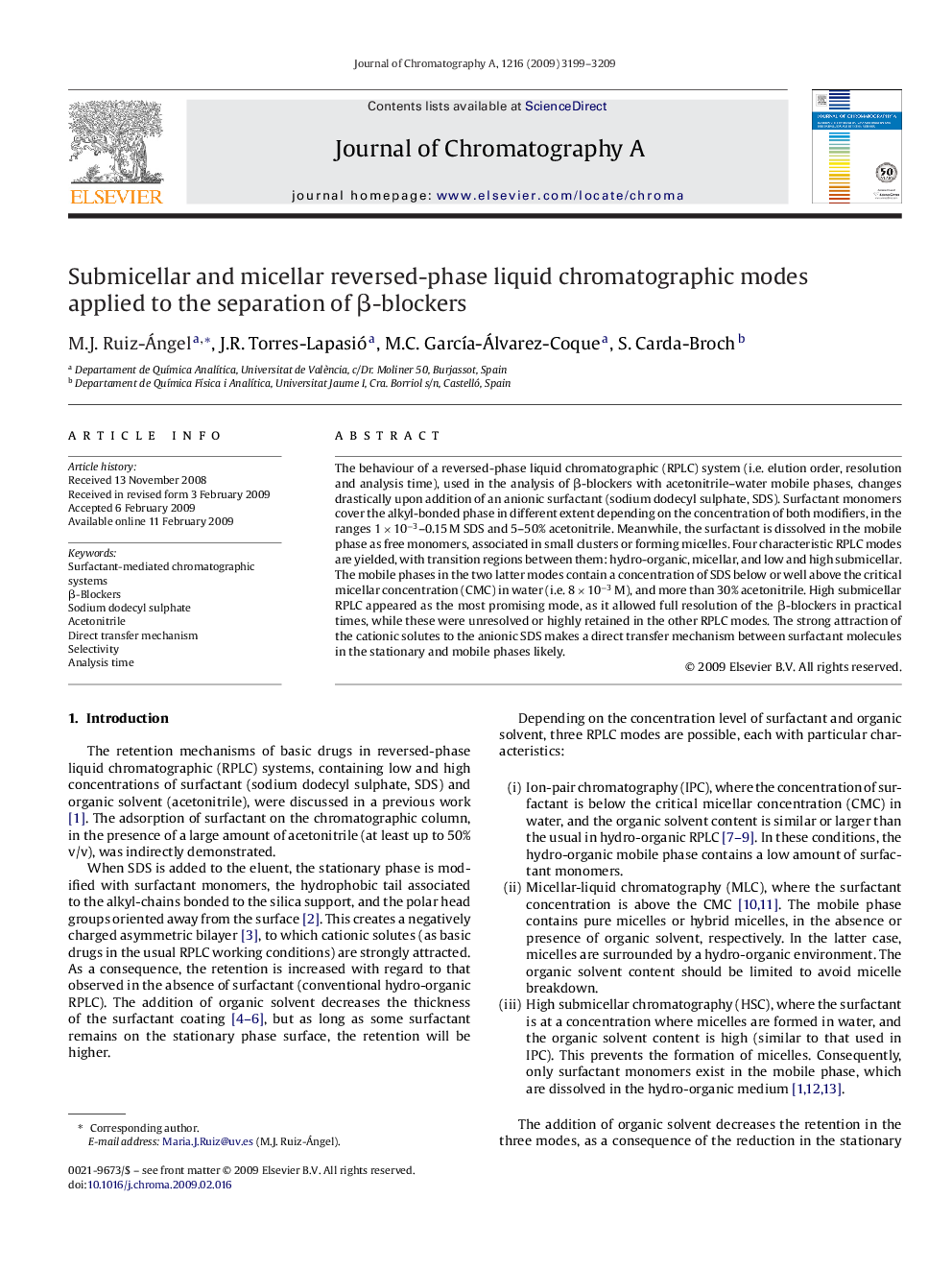| Article ID | Journal | Published Year | Pages | File Type |
|---|---|---|---|---|
| 1204474 | Journal of Chromatography A | 2009 | 11 Pages |
Abstract
The behaviour of a reversed-phase liquid chromatographic (RPLC) system (i.e. elution order, resolution and analysis time), used in the analysis of β-blockers with acetonitrile-water mobile phases, changes drastically upon addition of an anionic surfactant (sodium dodecyl sulphate, SDS). Surfactant monomers cover the alkyl-bonded phase in different extent depending on the concentration of both modifiers, in the ranges 1 Ã 10â3-0.15 M SDS and 5-50% acetonitrile. Meanwhile, the surfactant is dissolved in the mobile phase as free monomers, associated in small clusters or forming micelles. Four characteristic RPLC modes are yielded, with transition regions between them: hydro-organic, micellar, and low and high submicellar. The mobile phases in the two latter modes contain a concentration of SDS below or well above the critical micellar concentration (CMC) in water (i.e. 8 Ã 10â3 M), and more than 30% acetonitrile. High submicellar RPLC appeared as the most promising mode, as it allowed full resolution of the β-blockers in practical times, while these were unresolved or highly retained in the other RPLC modes. The strong attraction of the cationic solutes to the anionic SDS makes a direct transfer mechanism between surfactant molecules in the stationary and mobile phases likely.
Related Topics
Physical Sciences and Engineering
Chemistry
Analytical Chemistry
Authors
M.J. Ruiz-Ángel, J.R. Torres-Lapasió, M.C. GarcÃa-Álvarez-Coque, S. Carda-Broch,
